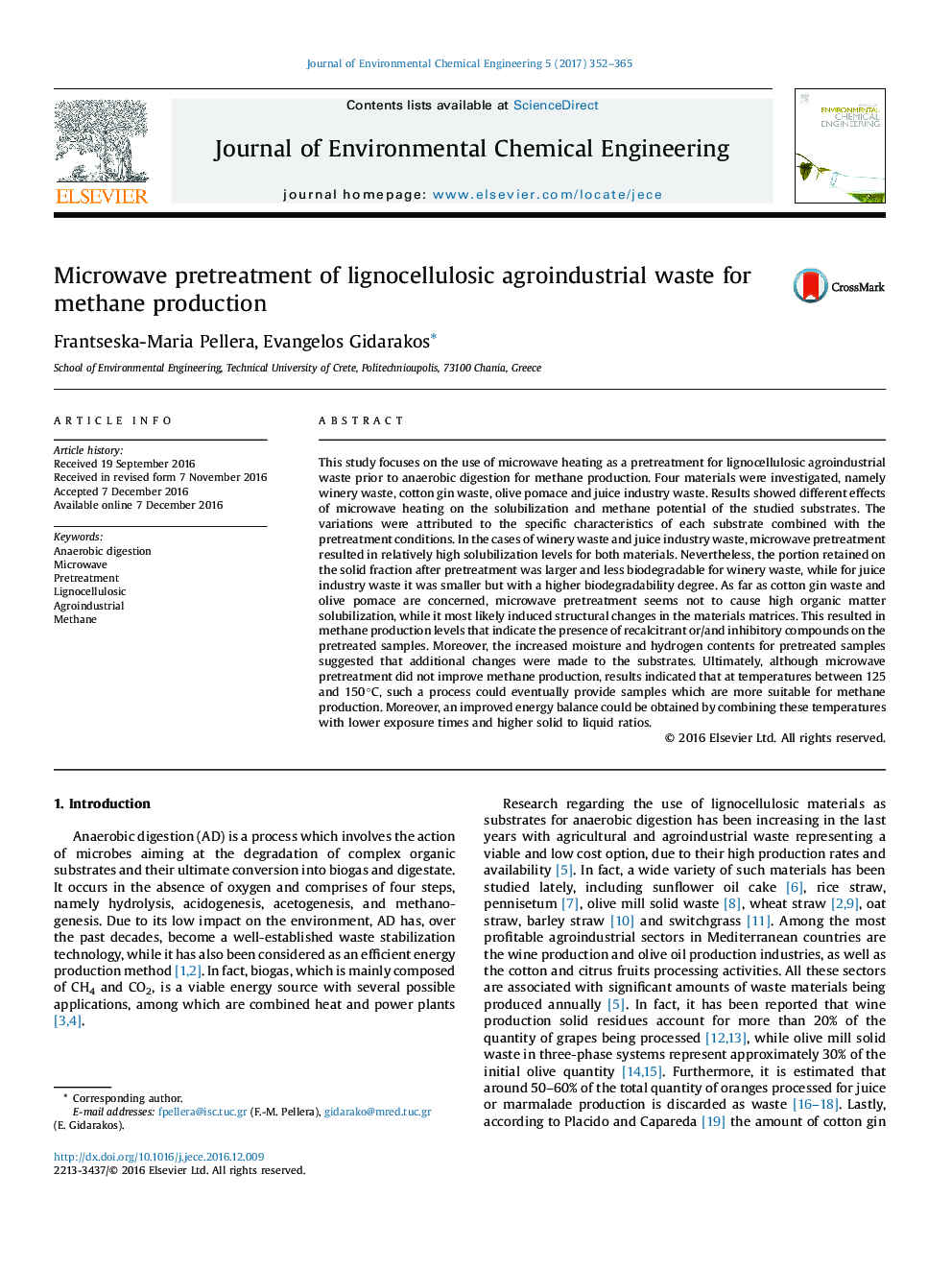| Article ID | Journal | Published Year | Pages | File Type |
|---|---|---|---|---|
| 6477356 | Journal of Environmental Chemical Engineering | 2017 | 14 Pages |
â¢Microwave pretreatment exerted different effects on each investigated substrate.â¢Microwaves affected winery and juice industry waste mainly regarding solubilization.â¢Pretreatment likely caused structural changes on cotton gin waste and olive pomace.â¢Microwave pretreatment led to lower methane yields for the investigated substrates.â¢Pretreatment at 125-150 °C produces samples more suitable for methane production.
This study focuses on the use of microwave heating as a pretreatment for lignocellulosic agroindustrial waste prior to anaerobic digestion for methane production. Four materials were investigated, namely winery waste, cotton gin waste, olive pomace and juice industry waste. Results showed different effects of microwave heating on the solubilization and methane potential of the studied substrates. The variations were attributed to the specific characteristics of each substrate combined with the pretreatment conditions. In the cases of winery waste and juice industry waste, microwave pretreatment resulted in relatively high solubilization levels for both materials. Nevertheless, the portion retained on the solid fraction after pretreatment was larger and less biodegradable for winery waste, while for juice industry waste it was smaller but with a higher biodegradability degree. As far as cotton gin waste and olive pomace are concerned, microwave pretreatment seems not to cause high organic matter solubilization, while it most likely induced structural changes in the materials matrices. This resulted in methane production levels that indicate the presence of recalcitrant or/and inhibitory compounds on the pretreated samples. Moreover, the increased moisture and hydrogen contents for pretreated samples suggested that additional changes were made to the substrates. Ultimately, although microwave pretreatment did not improve methane production, results indicated that at temperatures between 125 and 150 °C, such a process could eventually provide samples which are more suitable for methane production. Moreover, an improved energy balance could be obtained by combining these temperatures with lower exposure times and higher solid to liquid ratios.
